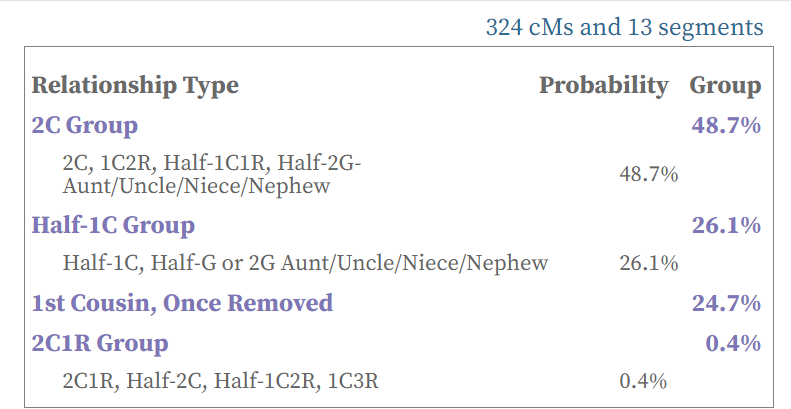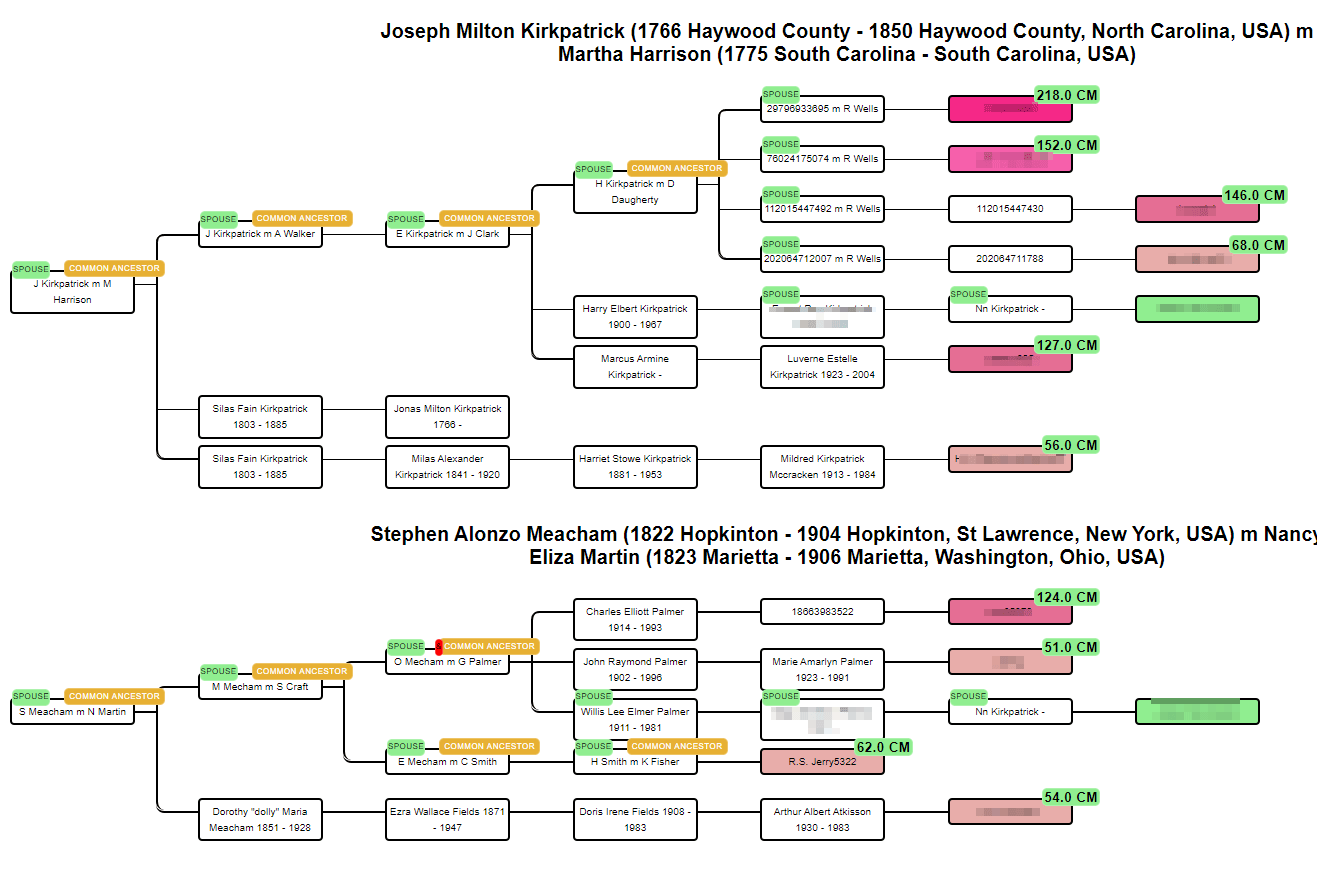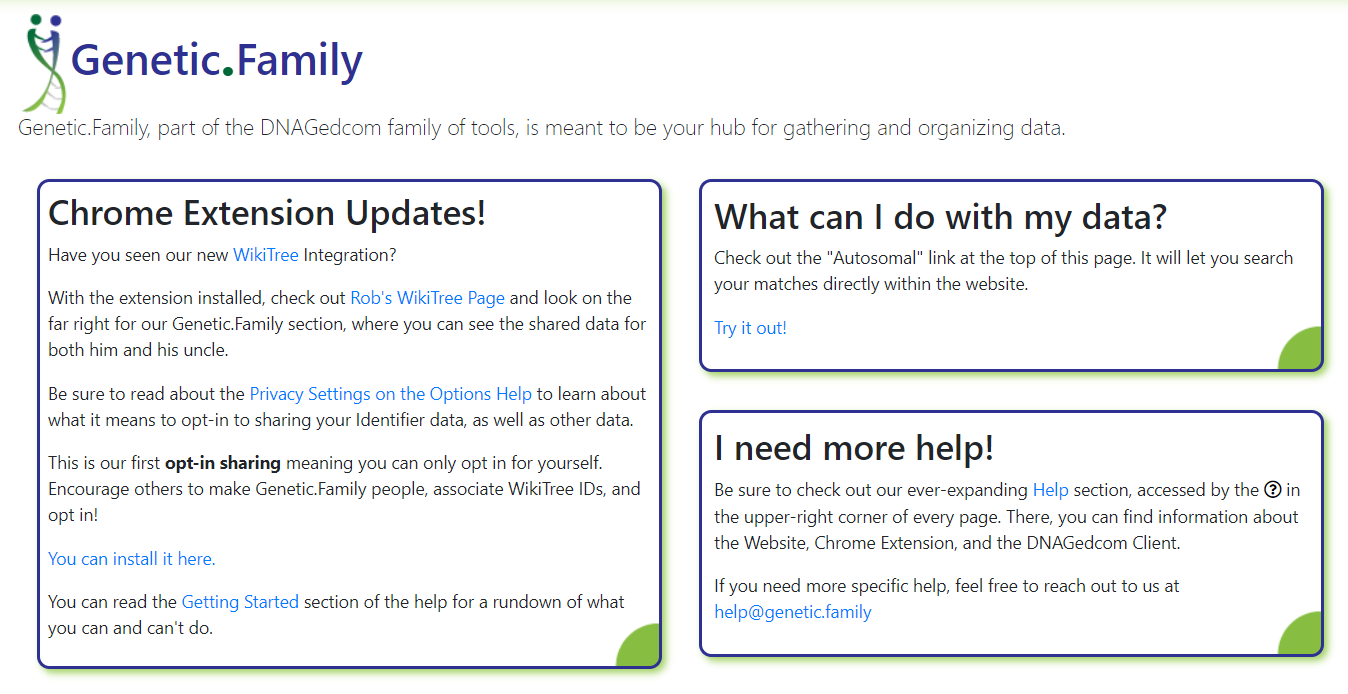Third party DNA tools


By Kitty Munson Cooper Blogging at blog.kittycooper.com
slides at https://slides.com/kittycooper/




Why use a 3rd Party DNA tool?
-
Look at how your DNA relatives relate to each other visually: Clustering
-
Compare to relatives who tested elsewhere (GEDmatch)
-
Get other opinions on possible relationships (DNApainter, DNA-sci)
-
Other specialized tools: find haplogroup, check consanguinity
Relationship Calculators
The daughter of my cousin CIaire shares more DNA with me than any other first cousin once removed
619 cM

Here are Ancestry's estimates on how we are related

My favorite tool is the online calculator at
https://dnapainter.com/tools/sharedcmv4
Enter the cM and see probable relationships

619



But there is another Calculator which adds in segment sizes by including the number of segments - dna-sci.com/tools/segcm/


You might try using the "What Are The Odds" tool at DNApainter to check your relationship theory - https://dnapainter.com/tools/probability

Read this to learn more blog.familyhistoryfanatics.com/2019/08/what-are-the-odds-dna.html
If you can make a GEDCOM of the descendants of the common ancestors, you can upload that to WATO …
An unknown father case named B had a 779 cM match to a person some 35 years younger and also a 324 cM match to the daughter of the match
normally that might be enough if the match responds and helps but no such luck

So we checked the possibilities at my favorite online calculator
To combine the probabilities of all the DNA matches to descendants of Caleb Browning b 1832 we made this WATO tree

N.B. The father of the good match is the same age as our B
There is a facebook group as well as an ftDNA project for our terminal SNP L-238

what does the DNA-SCI calculator tell us?
Now the daughter of the best match - expected half 2G niece

Why is GEDmatch the best place to compare your kit to DNA tests from Ancestry or from other testing companies?
- MyHeritage does not show the X nor can you compare your matches to each other
- Family Tree DNA does not show comparisons of third parties to each other nor triangulations
- Neither shows fully identical regions (FIRs)
- and there are many segment level tools at GEDmatch

Law Enforcement and Genetic Genealogy - GEDmatch
Clustering is a great tool for visualing how DNA cousins are related

Clustering can be a quick shortcut to finding the common ancestors with a cousin. The idea is to display your matches who match each other in an easy to understand visual format
You can sign up to cluster at GeneticAffairs.com or you can use the clustering tools from DNAgedcom.com or GEDmatch or MyHeritage or DNA2tree

The result might look like this, each colored box is expected to consist of matches descended from one set of your great grandparents
On some versions of clustering, all the names are clickable to the match (others have a list below)
Note that the boxes are not the perfect 4 - probably because the low end was selected as 30 cM, try 60cM

Sample of clustering at GEDmatch
MyHeritage includes a cluster tool from Genetic Affairs






I recently found a 3rd cousin, Melissa ... Her cluster includes many Munsons so that is where she must belong
In the lists of people for each cluster your notes are included and everything is clickable
Genetic Affairs can do auto-clustering from FamilyTreeDNA and 23andme


Genetic Affairs also has a tree building feature.
Jack
Jack
Sadly for adoptees, Ancestry.com has disallowed this
DNA2tree is only on iPhones and iPads via a paid subscription but it is a real game changer for unknown parentage searches

It automates finding common ancestors at Ancestry
DNA2tree also has clustering

DNAgedcom has many tools, focused on helping adoptees

DNAgedcom has a paid client that will collect your match data from most web sites


The numbers of trees each ancestor appears in scream out ENDOGAMY
GWorks from DNAgedcom can make a database of common ancestors from your matches

You can create kits for deceased relatives from existing kits at Borland

The idea of the genetic family site is a place to consolidate your data from the many test sites
You can determine the likely Y haplogroup from a male Ancestry DNA kit with the Morley Tool

How to do that is explained here on my blog
blog.kittycooper.com/2019/06/why-y/

QUESTIONS?
Third Party DNA Tools - 2023
By Kitty Cooper
Third Party DNA Tools - 2023
Exploring many 3rd party DNA tools: relationship calculators, clustering. WATO
- 1,567



